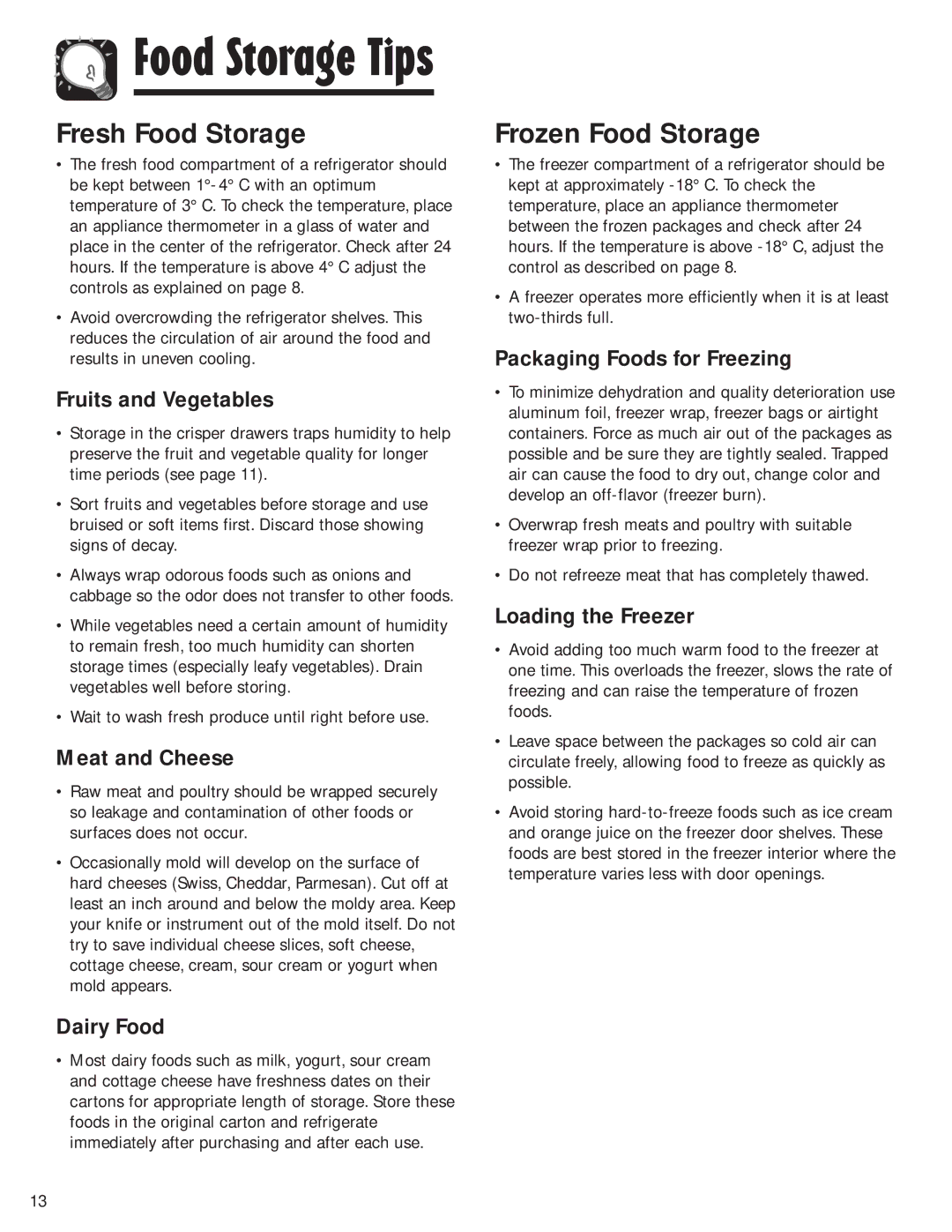G32026PExx, SOV026TB specifications
The Maytag SOV026TB and G32026PE models are innovative appliances designed to enhance home comfort and efficiency. As part of Maytag's commitment to quality and reliability, these models come equipped with a range of features and technologies that cater to modern household needs.The Maytag SOV026TB is a state-of-the-art refrigerator that boasts a sleek design, combining aesthetics with functionality. One of its standout features is the ExtendFresh temperature management system, which ensures optimal food preservation by controlling humidity levels. This technology maintains an even temperature throughout the fridge and freezer compartments, preventing spoilage and extending the freshness of your groceries.
In addition, this model includes the PowerCold feature, which rapidly cools the interior after the door has been open for an extended period, ensuring that items return to optimal temperatures quickly. With its adjustable shelving and flexible storage options, the SOV026TB allows users to maximize storage efficiency, making it suitable for households of various sizes.
The G32026PE, on the other hand, is a robust dishwasher that offers a range of advanced washing technologies. Featuring the powerful Resist Dry technology, it ensures that dishes come out sparkling clean and free from water spots. The targeted wash arms provide better water coverage, ensuring that all areas of the dishwasher are effectively cleaned, even for larger loads.
One of the most appealing aspects of the G32026PE is its QuietSeries sound package, which minimizes operational noise, allowing for a peaceful kitchen environment. Additionally, it includes a variety of wash cycles and options tailored to different types of dishes and soil levels, giving users the flexibility they need to address various cleaning challenges.
Both the SOV026TB and G32026PE models reflect Maytag's dedication to efficiency, boasting Energy Star certifications to help save on energy bills while reducing environmental impact. This commitment to sustainability is further complemented by durable materials and construction, ensuring that these appliances stand the test of time.
In summary, the Maytag SOV026TB refrigerator and G32026PE dishwasher combine cutting-edge technology with user-friendly features to provide reliable performance and enhanced convenience. These appliances are designed not only to meet the demands of modern households but also to ensure longevity and sustainability in everyday use.
